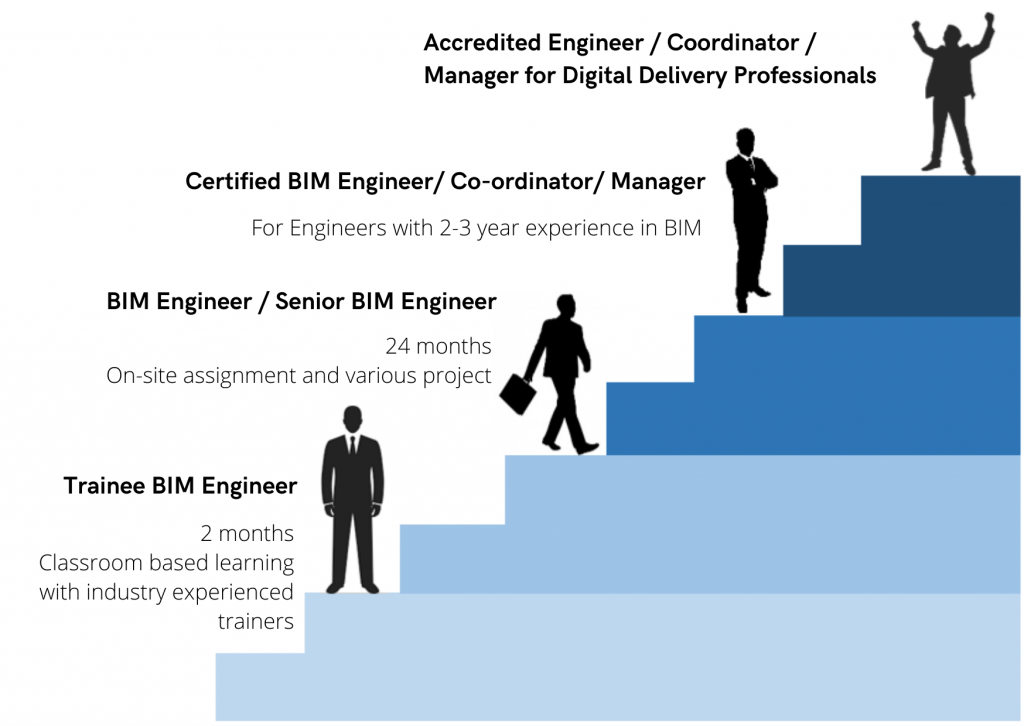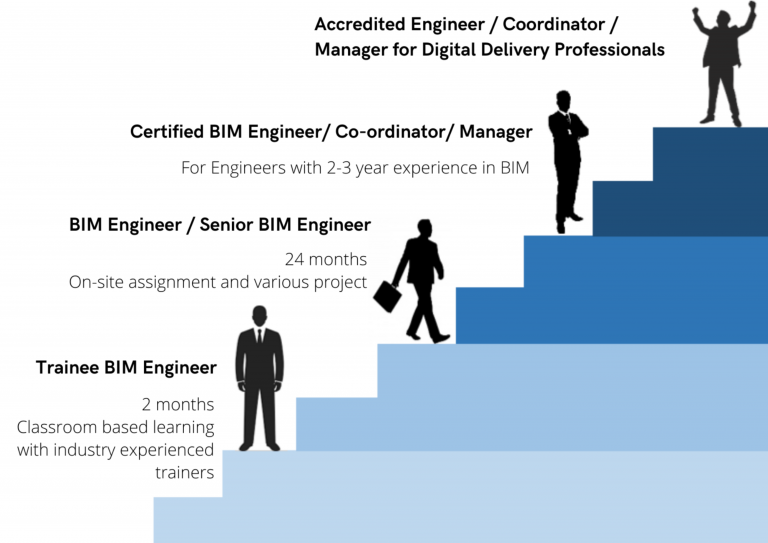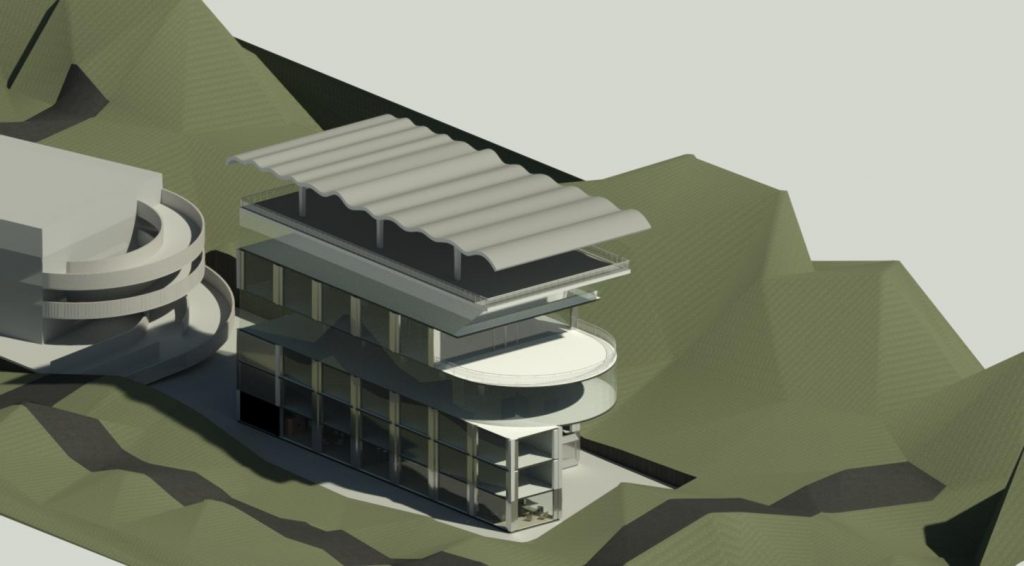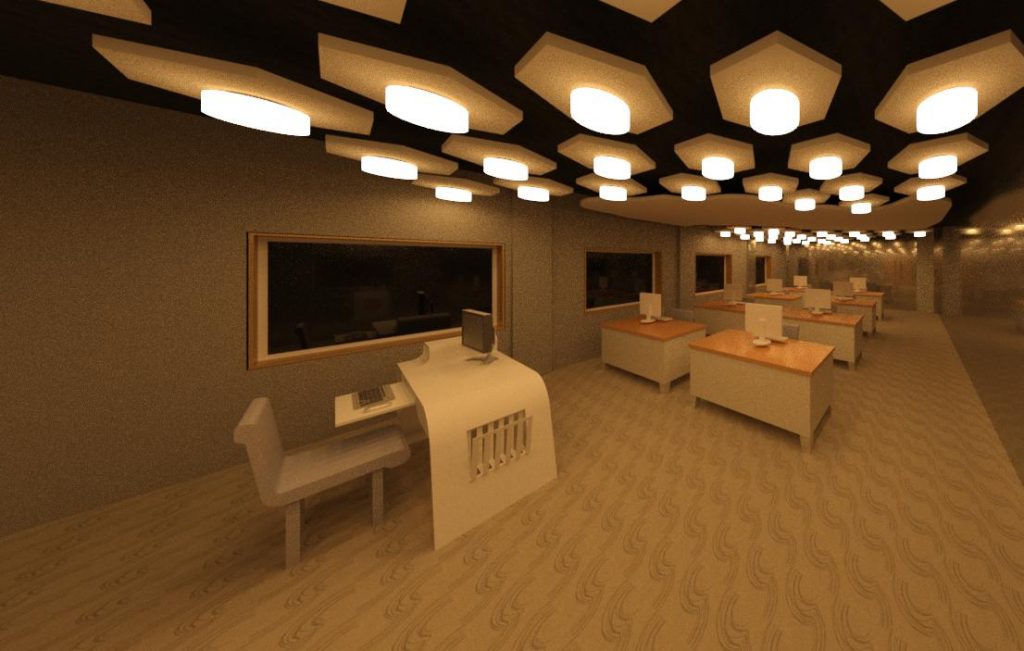

Benefits of BIM in Mechatronics Engineering
Streamlined Collaboration: BIM fosters seamless collaboration among multidisciplinary teams in mechatronics projects, enhancing communication and coordination. By integrating mechanical, electrical, and computer engineering systems into a unified digital model, BIM ensures that all stakeholders are working from the same information, minimizing misunderstandings and rework.
Risk Mitigation: BIM’s clash detection capabilities help identify potential conflicts between different systems early in the design process, reducing the likelihood of costly errors during construction. By addressing these clashes proactively, mechatronics engineers can mitigate project risks and maintain project schedules and budgets.
Data-Driven Decision Making: BIM provides mechatronics engineers with access to rich data about the project’s components, materials, and performance characteristics. This data-driven approach enables informed decision-making throughout the project lifecycle, from design optimization to maintenance planning, leading to more efficient and cost-effective outcomes.
Optimized Resource Allocation: Through accurate quantity takeoffs and detailed cost estimations, BIM enables mechatronics engineers to optimize resource allocation and procurement strategies. By identifying opportunities for value engineering and cost savings, BIM helps maximize project profitability while minimizing waste and inefficiency.
Enhanced Visualization: BIM’s 3D visualization capabilities offer mechatronics engineers and stakeholders a clearer understanding of complex systems and their interactions. By visualizing design concepts and performance simulations in a realistic virtual environment, BIM facilitates design iteration and decision-making, resulting in more innovative and efficient solutions.
Compliance and Regulation Adherence: BIM supports mechatronics engineers in ensuring compliance with regulatory requirements and industry standards throughout the project lifecycle. By embedding regulatory guidelines and performance criteria into the digital model, BIM helps identify potential compliance issues early on, avoiding costly penalties and delays later in the project.
Continuous Improvement: BIM’s lifecycle management features enable mechatronics engineers to capture lessons learned from previous projects and apply them to future endeavors. By maintaining a digital record of project data and performance metrics, BIM facilitates continuous improvement and innovation in mechatronics engineering practices, driving efficiency gains and cost reductions over time.
Entry Requirements

Role Of A Mechatronic Graduates In AcePLP
Fresh Mechatronic graduates and mid-careerists with no prior work experience will complete 2 months of classroom training in BIM and CAD applications. The training is conducted by Ace Industry Academy (AIA), the official training arm of AcePLP, and will prepare you as you embark on your career as a Mechatronics BIM Engineers. AIA is an SSG/WSG approved training provider, and some modules which you attend during this period will be WSQ-accredited, and in line with the national skills framework for the Built Environment. (SSG/WSG is a statutory council formed by the Ministry of Manpower and Ministry of Education.)
Certificates will be awarded on completion of classroom training, and thereafter, you will be assigned to work on projects to gain experience. To guarantee a smooth transition, AcePLP pairs freshly trained BIM Engineers with senior colleagues or Alumni. Trainers will also be on hand to assist the new engineers if they run into any challenges. The experience you gain from participating in projects can be used towards the Digital Delivery Management Accreditation Scheme.
Mechatronics is an interdisciplinary branch of engineering that integrates mechanical, electronic, and electrical engineering systems, your area of study allows you flexibility in creating BIM models for any of these disciplines. You would also be suitable for coordinating interdisciplinary services within a construction project, for example, by interfacing Mechanical BIM models with Electrical BIM models.
Today, BIM is used in all disciplines and across all jobs in the Built Environment, including building systems such as Air-conditioning and Mechanical Ventilation (ACMV). Advancements in construction technology is reshaping the future of mechanical and electrical engineering jobs.
Client procuring such services can be main contractors with their own Mechanical and Electrical (M&E) departments, consultants that provide engineering design and advisory services in this area, or even specialist M&E subcontractors and suppliers.
As you learn and progress in the digital delivery services role, you may be moved into assignments that require a great deal of integration and coordination with other stakeholders, because the role of design and construction is often a collaboration between consultants, contractors, and specialists.
The future of construction will involve robotics and artificial intelligence to automate parts of the work that are manual, time-consuming, or hazardous to health and safety. Your degree or diploma in mechatronics can be helpful for integrating robotic and automation technology into the Built Environment, including the construction, operations and maintenance to enhance productivity on manual tasks.
What You Will Learn On The Job
Through our training programme, we ensure that you gain the ability to use the most popularly used BIM application software in Singapore, which are Autodesk Revit, Bentley OpenBuilding, OpenRail and OpenPlant. This gives you the flexibility to work on various kinds of building and infrastructure projects in Singapore. We will also cover the use of 2D products such as AutoCAD and MicroStation, which are crucial for the documentation of the BIM models.
As and when the use cases arise, we will put you through training in 4D BIM products, combining the BIM model with a Microsoft Projects or Primavera P6 schedule using products such as Synchro 4D or Navisworks Manage, enabling you to deliver on Virtual Design and Construction processes. You may undergo other types of training depending on your interest and where the opportunities take you.
What Is Your Career Progression As A Mechatronics Engineering Graduate?
The Digital Delivery Management track involves the adoption and implementation of up-to-date emerging digital technologies to optimize operations and processes, improve collaboration and enhance work efficiency. There are many opportunities for jobs in Digital Delivery Management, so long as your interest lies in technology implementation.
You can progress in this track to become an expert DDM professional, rising in the ranks to become a Tier 2 (Lead) BIM Manager, where you will play leading roles in project delivery, digital solutions and adoption, competency building and innovation to organisations or project teams in the Built Environments.
At the height of your career in the DDM track, you can aspire to be a Chief Digital Officer (Tier 1), a C-suite role where you will oversee the implementation and innovation of digital solutions to achieve digital transformation in the business, leading the strategic direction in your team.
You can choose to specialize in a career in Mechanical and Electrical Engineering. With your diploma/degree in Mechantronics, as well as experience in BIM for Mechanical and Electrical Engineering, you are equipped for future-proof career in Mechanical and Electrical Engineering.
Alternatively, you can move into other careers in the Built Environment that is of interest to you, such as in Architecture, Engineering Design and Consultancy, Construction and Project Management. With a domain knowledge grounded in construction through the experience in projects, armed with a spatial awareness via your 3D modelling and visualization skills, you can enter other tracks to continue to build domain expertise and experience.
By gaining the requisite skills and experience through our apprenticeship programme, you will minimally qualify as a Tier 4 DDM Professional (Assistant Specialist), commonly known in our industry as a BIM Modeller, at the end of the 26-month programme.
If you have undertaken BIM coordination projects in the period of your apprenticeship, integrating models from various engineering disciplines such as Structure and Architecture to deliver coordinated combined services models, you may qualify at the Tier 3 DDM Professional (Specialist) level, commonly known in our industry as a BIM Coordinator.
For information regarding the DDM Accreditation Scheme, visit ddm.buildingsmartsingapore.org.
Career Pathways of Mechatronics Engineering Graduates To Accredited Digital Delivery Management (BIM) Professionals

Career Pathways of Mechatronics Engineering Graduates To Accredited Digital Delivery Management (BIM) Professionals
Job Market Diversification:
Mechatronics engineering graduates entering the job market face stiff competition and may find it challenging to differentiate themselves. However, by acquiring skills in Building Information Modeling (BIM), they open doors to a diverse range of industries beyond traditional engineering sectors. These industries include architecture, construction, urban planning, and facility management, providing graduates with more opportunities for career growth and professional development.
Value Proposition in Industry 4.0:
In the era of Industry 4.0, where digital technologies are revolutionizing the manufacturing and construction sectors, mechatronics engineering graduates with expertise in BIM stand out as valuable assets to employers. Their combination of skills in mechanical, electrical, and computer engineering, coupled with proficiency in BIM tools and methodologies, enables them to play key roles in implementing digital workflows, optimizing processes, and driving innovation across the entire building lifecycle.
Interdisciplinary Integration:
BIM projects require collaboration among diverse teams of architects, engineers, contractors, and stakeholders. Mechatronics engineering graduates bring a unique perspective to these teams, bridging the gap between different disciplines through their holistic understanding of complex systems. By facilitating communication and knowledge sharing across interdisciplinary boundaries, they contribute to more integrated and efficient project delivery, resulting in cost savings, improved quality, and enhanced stakeholder satisfaction.
Sustainability and Efficiency:
Mechatronics engineering graduates with BIM expertise are well-positioned to address these challenges by leveraging digital tools and simulation techniques to optimize building performance. By incorporating renewable energy systems, intelligent controls, and advanced analytics into building designs, they can help create more sustainable and energy-efficient built environments, thereby reducing carbon emissions and mitigating the impacts of climate change.
Entrepreneurial Opportunities:
The intersection of mechatronics engineering and BIM opens up exciting entrepreneurial opportunities for graduates with an entrepreneurial spirit. They can establish startups offering specialized BIM services, develop innovative products and solutions for the construction industry, or create software tools to enhance BIM workflows. By leveraging their technical skills, creativity, and business acumen, they can carve out a niche in the market and make a significant impact on the industry while building successful ventures of their own.
Other Available Positions

IT Systems Engineer
Manage our existing network infrastructure and develop IT Solutions for clients to meet their business needs.

Human Resources
Engage with aspiring young engineers and develop policies and initiatives that nurture a learning environment.

Sales
Be part of a team sourcing out the best opportunities for talent development, and help us create valuable networks in the industry.

Production Operator
Collaborate on our print production line and delivery services




